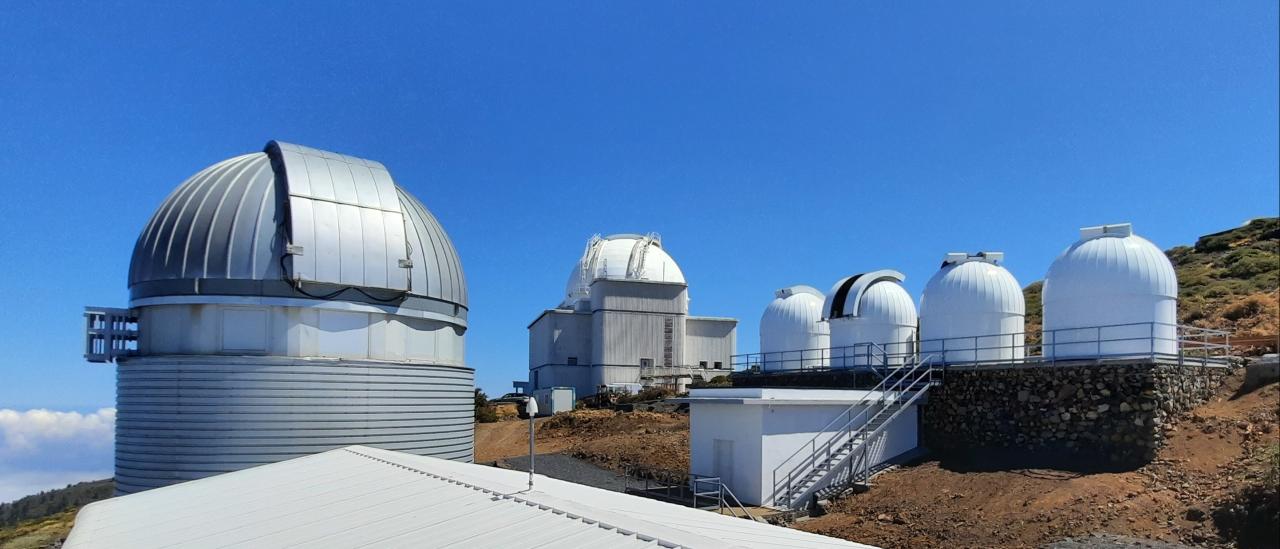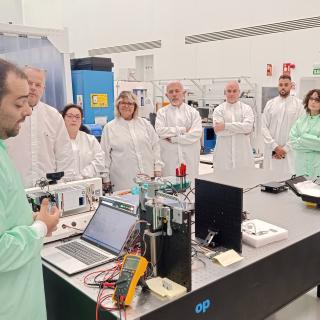The Instituto de Astrofísica de Canarias (IAC) and the KU Leuven, Belgium, have amplified their framework of collaboration in astrophysical research. The two institutions have signed an agreement which gives continuity to the operations of the Mercator Telescope at the Roque de los Muchachos Observatory (ORM), which started in 2002, and whose work will be strengthened by the installation of a new instrument called MARVEL (Mercator Array for Radial Velocities).
Mercator is a semi-robotic telescope with a 1.2 metre primary mirror. Its name comes from that of the famous Flemish cartographer Gerardus Mercator (1512-1594). The main scientific results of the research carried out with the data from Mercator are related to a wide variety of variable phenomena, with a strong focus on stellar astrophysics and astroseismology. In the last five years alone, the observations made with this telescope have given rise to over 150 scientific publications. Among these we can pick out the recent publication which has permitted the calibration of stellar evolution models, and the analysis of blue supergiant stars in the Milky Way, among other results.

The agreement also supports the installation of the MARVEL instrument, a new set of four telescopes dedicated to the spectroscopy of high prescision radial velocity (RV). The main aims of MARVEL are to complement the scientific results from space missions which are basic to the discovery and analysis of exoplanets, such as TESS, PLATO, and ARIEL. In additionthese new instruments can be of value in the characterization of their host stars, and for monitoring programmes of stellar systems. The construction and deployment of MARVEL started at the end of 2023, and it is hoped that it will be completed in the coming months. Its operation and exploitation will be carried out jointly with the Mercator telescope.
The MARVEL instrument is also a significant investment in the Observatory. The construction cost for the placing of the four new domes and the scientific instrument mount come to more than €300,000. The construction work has been contracted totally with Spanish companies based in La Palma, some directly to companies local to La Palma and a significant portion via local subcontracts and acquisitions by the principal company involved. Adding the cost of the construction work to that of the development of the scientific instruments within MARVEL the total investmente adds up to over four million euros, of which 60% comes from the KU Leuven, and the rest of the investment is provided by the other members of the consortium behind the experiment.
The agreement signed between the IAC and the KU Leuven will be in force initially for five years, extendable for a further five, according to section 2 of article 34 of the Ley 4/2011, de 1 de junio, de la Ciencia, la Tecnología y la Innovación, as modificed by the disposición final 9.1 del Real Decreto-ley 36/2020, de 30 de diciembre.
This agreement is also a step forward in the adaptation of the international agreements of the IAC, in the legal framework for administrative agreements established in Ley 40/2015, de 1 de octubre, de Régimen Jurídico del Sector Público. The gareement will be published in the Boletín Oficial del Estado (BOE) in the coming weeks.
The Observatorio del Roque de los Muchachos (ORM) situated in the town of Garafía (La Palma) is at the edge of the Parque Nacional Caldera de Taburiente, at 2.396 metres above sea level.
Thanks to the sky over La Palma, this observatory satisfies optimum conditions for astronomical research, and for that reason it houses some twenty scientific instruments for different types of night-time observations, robotic observations, Solar Physics and High Energy Physics.



